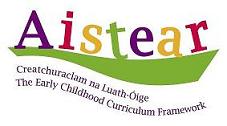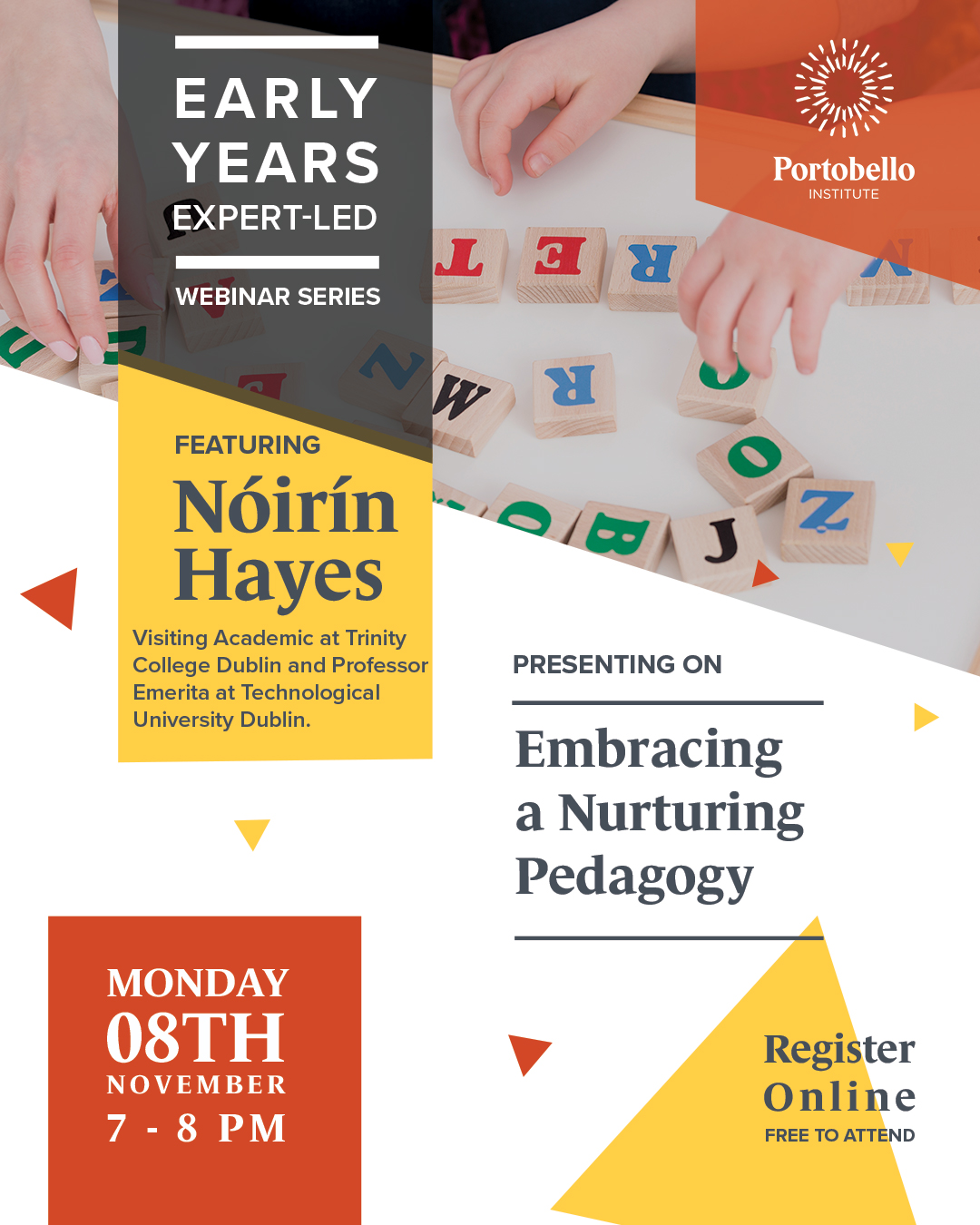With so much information in the ether about curriculum frameworks and pedagogical approaches it can sometimes be a challenge to “see the wood from the trees” in the context of early years learning and practice frameworks.
Therefore, in this short blog I hope to bring a little bit of clarity to what sometimes can seem to be quite an ambiguous area of professional practice.
Portobello Presents: Free Early Years Webinar on Nurturing Pedagogy with Nóirín Hayes

Picture: ncn.ie.
Aistear Alongside Other Pedagogical Approaches
Aistear is Ireland's early years curriculum framework.
What this means is that it provides information and guidance to adults for example, early years professionals, about how to plan and provide enjoyable and challenging holistic learning experiences for young children (NCCA).
The difficulty perceived as arising is when Aistear is then considered alongside a pedagogical approach or a method of teaching, for example Montessori or Steiner or Play Based which then elicits further questions such as: which is the curriculum framework; which is the pedagogical approach; and how do I use them together?
As a curriculum framework, Aistear supports and can be used with any pedagogical approach and it is important that we as early years professionals give this consideration.
For the purposes of the example I am about to explore, let us consider Montessori in this instance and how it can be used with Aistear.
While we are at it and just to keep things interesting, I will use ‘Russian Dolls’ as the analogy to help provide an explanation of what I mean.
The Montessori Method
Montessori or the Montessori Method is widely accepted as a teaching method.
It is based on the belief “that children develop in stages or planes and that each stage has its own unique qualities and characteristics” (Isaacs, 2014, p. 14).
There are six areas of learning which are complimented by various Montessori activities.
The Montessori activities which apply to the preschool stage otherwise known as the “absorbent mind stage” are those with which we would be most familiar in the context of Irish early years settings.
These activities represent the Montessori curriculum (Isaacs, 2014, pp. 36-38).
The planning and provision of these activities within the Irish context are made possible with the information and guidance available to early years professionals from within Aistear.
Russian Doll Analogy
It is this point which brings me to my Russian Doll analogy.
We can all visualise a set of Russian Dolls either lined up alongside each other or neatly nestled within each other.

Picture: medium.com.
If we consider firstly the largest doll to the left of the image you are looking at to be Aistear, consider then the doll next to it to be Montessori and each of the other smaller wooden dolls as representing the various elements that comprise the Montessori method, for example the activities, the stages or planes of development, and the learning areas, you can now hopefully begin to visualise how these various elements (the smaller wooden dolls) fit within Montessori and how Montessori fits neatly within Aistear.
Or to put it another way, how the Montessori curriculum is framed by Aistear, the Irish early years curriculum framework.
The Montessori method is also guided by a set of principles which are:
1. Respect for the child
2. The absorbent mind
3. Sensitive periods
4. The prepared environment
5. Autoeducation/self-education (Morrison, 2021).
Similarly, Aistear is underpinned by three groups of principles which are
1. Children and their lives in early childhood
2. Children’s connections with others
3. How children learn and develop (NCCA).
Hopefully you can visualise now, with or without the Russian Doll analogy, how the Montessori principles nestle within the Aistear principles too.
If for a moment you could consider the broader Irish early years landscape, perhaps you might find yourself drawing similar parallels between Aistear and other pedagogical approaches which exist both nationally and internationally.
Aistear is an incredibly adaptable and versatile framework and certainly a tool worth keeping close to hand in our collective professional toolbelts.
The NCCA is currently holding consultations in respect of updating Aistear (more information about this consultation process may be found here.
READ MORE: Aistear Under Review, What Would You Change?
For now, however, let us continue to integrate Aistear into our daily professional practice so that we can continue to engage in child-led provision which “nurtures the true potential of the whole child” (Issacs, 2014, p.31).
Further learning and insights into Aistear as the Curriculum Framework supporting the learning environment, can be gained in Portobello's BA Ord Early Childhood Studies Degree module Early Years Learning and Practice Frameworks, which Colette teaches.
Portobello Presents: Free Early Years Webinar on Nurturing Pedagogy with Nóirín Hayes
Portobello Institute's Early Years Department is proud to present the latest in a series of expert-led webinars discussing important topics in Early Childhood Education.
Our third webinar will be led by Nóirín Hayes, who will speak about Embracing a Nurturing Pedagogy on Monday, November 8 from 7 - 8 pm. Register here now.

About the Author
Colette Saunders is the Module Lead, Blending Learning Support Tutor and Associate Lecturer on Portobello Institute’s Level 7 BA (Ord) Early Childhood Studies Degree and Project Supervisor on our BA (Hons) Early Childhood Studies degree Level 8.



%20(2).png?width=1200&name=BANNER%20HOPIN%20E_Y%20(1000%20x%20500%20px)%20(2).png)
.png?width=352&name=Untitled%20design%20(46).png)
-1.png?width=352&name=Michelle%20IWD%20Feature%20Image%20(8)-1.png)